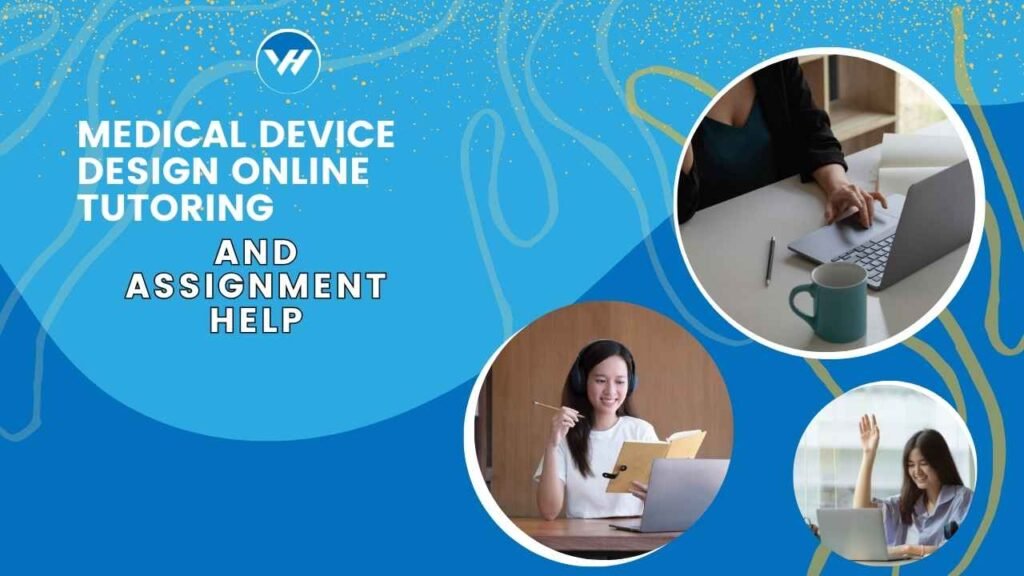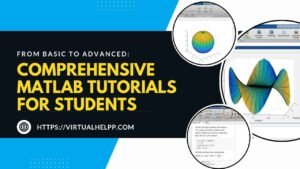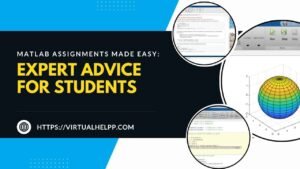Medical device design is a critical field that sits at the intersection of healthcare and engineering. It involves the creation and development of instruments, apparatuses, and machines that diagnose, prevent, monitor, and treat various health conditions. From simple tools like thermometers to complex machines like MRI scanners, medical device design plays a vital role in improving patient care and saving lives.
Understanding the intricacies of medical device design requires not just a solid foundation in engineering principles but also a deep understanding of biological systems, human anatomy, and regulatory requirements. This makes it a challenging yet rewarding field of study, as professionals in this domain contribute directly to advancements in healthcare.

Table of Contents
ToggleChallenges Faced by Students in Medical Device Design
Complexity of Medical Device Regulations
One of the most significant challenges in medical device design is navigating the complex web of regulations and standards that govern the field. Students must familiarize themselves with various guidelines, including those from the U.S. Food and Drug Administration (FDA) and the International Organization for Standardization (ISO). These regulations ensure that devices are safe and effective for use but can be overwhelming to grasp.
Integration of Multidisciplinary Knowledge
Medical device design is inherently multidisciplinary, requiring knowledge from various fields such as biomechanics, materials science, electronics, and software engineering. Students often struggle to integrate these diverse areas of study into cohesive design solutions, making it a daunting task to master the subject.
Staying Updated with Technological Advances
The medical device industry is continuously evolving, with new technologies and innovations emerging at a rapid pace. Students must stay abreast of the latest advancements to ensure that their designs are cutting-edge and meet the current demands of the healthcare sector. This need for constant learning can be overwhelming, especially when combined with academic pressures.
The Role of Online Tutoring in Medical Device Design
Personalized Learning Experience
Online tutoring offers a personalized learning experience that caters to the unique needs of each student. Unlike traditional classroom settings, where the pace is dictated by the curriculum, online tutoring allows students to learn at their own pace. Tutors can focus on areas where the student needs the most help, ensuring a more efficient and effective learning process.
Flexible Scheduling and Accessibility
One of the significant advantages of online tutoring is its flexibility. Students can schedule sessions at their convenience, making it easier to balance their studies with other commitments. Additionally, online tutoring is accessible from anywhere, eliminating the need for travel and allowing students to learn from the comfort of their homes.
Expert Guidance and Mentorship
Online tutoring provides students with access to experts in the field of medical device design. These tutors are often professionals with extensive experience in the industry, offering valuable insights and guidance. This mentorship can be crucial in helping students understand complex concepts, navigate regulatory requirements, and develop practical skills.
How Online Assignment Help Can Enhance Learning
Support with Complex Assignments
Assignments in medical device design can be complex, requiring a deep understanding of both theoretical concepts and practical applications. Online assignment help services provide students with the support they need to tackle these challenges. Tutors can guide students through difficult problems, help them understand the underlying principles, and ensure that their solutions are accurate and well-crafted.
Ensuring Quality and Accuracy in Assignments
Quality and accuracy are paramount in medical device design, where errors can have serious consequences. Online assignment help services ensure that students’ work meets the highest standards of quality. Tutors review assignments for accuracy, provide constructive feedback, and help students refine their work to achieve the best possible results.
Timely Completion and Submission
Meeting deadlines is crucial in any academic setting, and online assignment help services can play a vital role in ensuring that students complete their assignments on time. Tutors can help students manage their time effectively, prioritize tasks, and stay on track to meet submission deadlines. This not only helps students avoid penalties but also reduces stress and improves overall academic performance.
Key Topics Covered in Medical Device Design Tutoring
Introduction to Biomechanics
Biomechanics is the study of the mechanical principles of living organisms, particularly the human body. Understanding biomechanics is essential in medical device design, as it helps students create devices that interact safely and effectively with the human body. Topics covered in this area include the analysis of human motion, the forces acting on the body, and the design of devices that accommodate these forces.
Understanding Human Anatomy and Physiology
A solid understanding of human anatomy and physiology is crucial for designing medical devices that are both safe and effective. Students learn about the structure and function of various body systems, how they interact, and how medical devices can be designed to support or enhance their function. This knowledge is essential for ensuring that devices are compatible with the human body and do not cause harm.
Material Selection for Medical Devices
The choice of materials is a critical aspect of medical device design. Materials must be biocompatible, safe, and suitable for the intended use of the device. Students learn about the properties of different materials, including metals, polymers, ceramics, and composites, and how to select the appropriate material for a specific application.
Biocompatibility and Safety Considerations
Biocompatibility refers to the ability of a material to perform its function without causing an adverse reaction in the body. This is a key consideration in medical device design, as devices that are not biocompatible can cause inflammation, infection, or other complications. Students learn about the testing and evaluation of biocompatibility, as well as the safety standards that must be met for a device to be approved for use.
Medical Device Regulations and Compliance
Regulatory compliance is a major focus in medical device design. Students must understand the various regulations that govern the industry, including those from the FDA and ISO. These regulations ensure that devices are safe, effective, and manufactured to the highest standards. Topics covered include the design control process, risk management, and the documentation required for regulatory approval.
Understanding FDA and ISO Standards
The FDA and ISO have established a comprehensive set of standards that medical devices must meet to be approved for use. Students learn about these standards, how they apply to different types of devices, and how to ensure that their designs comply with them. This knowledge is essential for successfully bringing a medical device to market.
Prototyping and Testing in Medical Device Design
Prototyping is an essential step in the medical device design process, allowing designers to test and refine their ideas before moving to full-scale production. Students learn about different prototyping methods, including 3D printing and computer-aided design (CAD), as well as the importance of testing and validation.
Simulation and Virtual Prototyping
Simulation and virtual prototyping tools allow students to test their designs in a virtual environment, reducing the need for physical prototypes and speeding up the design process. These tools are particularly useful in medical device design, where testing in real-world conditions can be time-consuming and expensive. Students learn how to use simulation software to model the behavior of their devices and identify potential issues before they arise.
Benefits of Choosing Virtual Help for Medical Device Design Tutoring
Access to Qualified Tutors
Virtual Help connects students with highly qualified tutors who have extensive experience in the field of medical device design. These tutors offer expert guidance and mentorship, helping students navigate the complexities of the subject and achieve their academic goals.
Interactive and Engaging Learning Environment
Virtual Help provides an interactive and engaging learning environment that makes studying medical device design more enjoyable and effective. Through live sessions, interactive exercises, and real-time feedback, students can actively participate in their learning and build a deeper understanding of the subject.
Comprehensive Assignment Support
In addition to tutoring, Virtual Help offers comprehensive assignment support. Tutors can assist with everything from brainstorming ideas to reviewing final drafts, ensuring that students submit high-quality work that meets the requirements of their courses. This support is invaluable for students who want to excel in their studies and achieve top grades.
How to Get Started with Medical Device Design Tutoring on Virtual Help
Signing Up and Choosing a Tutor
Getting started with Virtual Help is easy. Students can sign up on the platform, browse through the list of available tutors, and choose the one that best meets their needs. Tutors are listed with detailed profiles, including their qualifications, areas of expertise, and student reviews.
Scheduling Sessions and Accessing Resources
Once a tutor is selected, students can schedule sessions at their convenience. Virtual Help offers flexible scheduling options, making it easy to find a time that works for both the student and the tutor. In addition to live sessions, students have access to a wealth of resources, including study guides, practice exercises, and reference materials.
Getting Assignment Help and Feedback
Virtual Help also offers assignment help services, where students can submit their assignments for review and receive detailed feedback from their tutors. This feedback is invaluable for improving the quality of the work and ensuring that it meets the requirements of the course.
Conclusion
Medical device design is a complex and challenging field, but with the right support, students can overcome these challenges and achieve academic success. Online tutoring and assignment help services like those offered by Virtual Help provide students with the personalized instruction, expert guidance, and comprehensive support they need to excel in their studies. Whether you’re struggling with a specific concept or need help with a challenging assignment, Virtual Help is here to assist you every step of the way.
FAQs
What is the scope of medical device design in healthcare?
Medical device design plays a crucial role in healthcare by developing tools and machines that improve patient care. The field offers diverse career opportunities, ranging from designing diagnostic equipment to creating therapeutic devices.
How can online tutoring help me understand complex concepts in medical device design?
Online tutoring provides personalized instruction tailored to your learning style. Expert tutors can break down complex concepts into manageable parts, making it easier to understand and apply the knowledge.
What kind of assignments can I get help with on Virtual Help?
Virtual Help offers assistance with a wide range of assignments, including design projects, regulatory compliance reports, prototyping tasks, and more. Tutors provide guidance at every stage of the assignment process.
Are the tutors on Virtual Help qualified to teach medical device design?
Yes, the tutors on Virtual Help are highly qualified professionals with extensive experience in the field of medical device design. They possess the knowledge and expertise needed to help students succeed in their studies.
How do I get started with online tutoring and assignment help on Virtual Help?
To get started, simply sign up on the Virtual Help platform, choose a tutor based on your needs, schedule your sessions, and begin learning. The process is straightforward, and the platform offers flexible scheduling to accommodate your availability.





